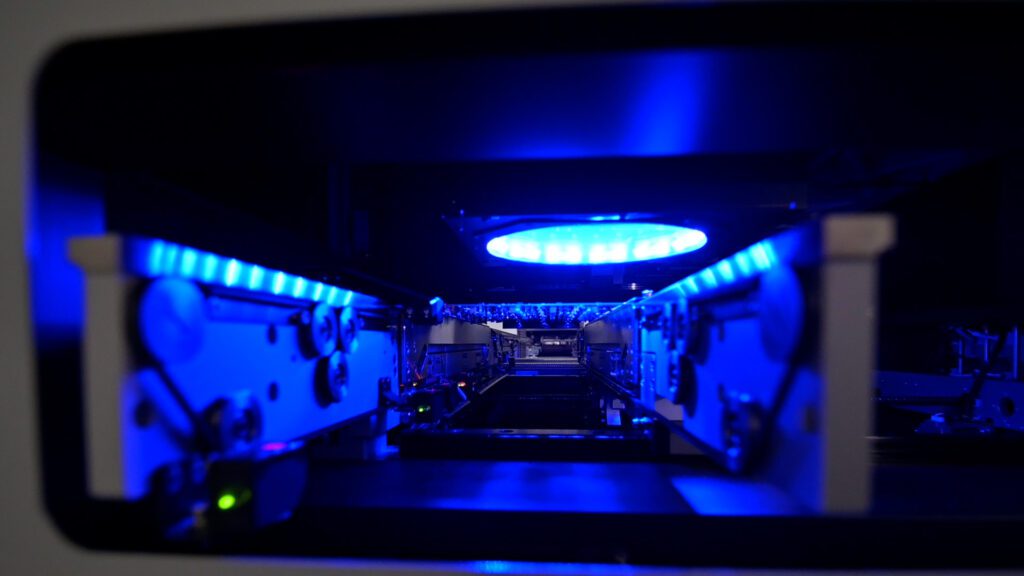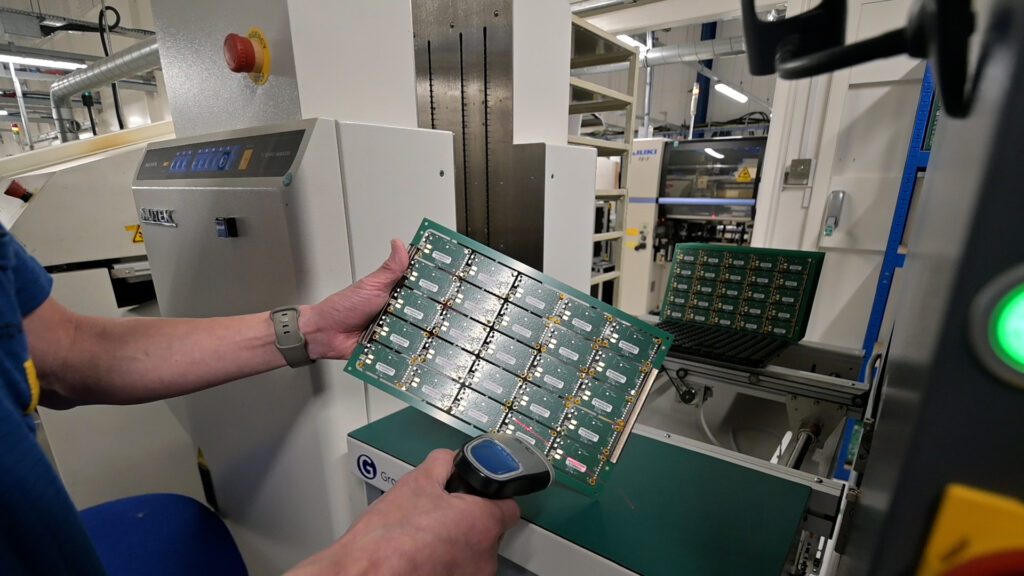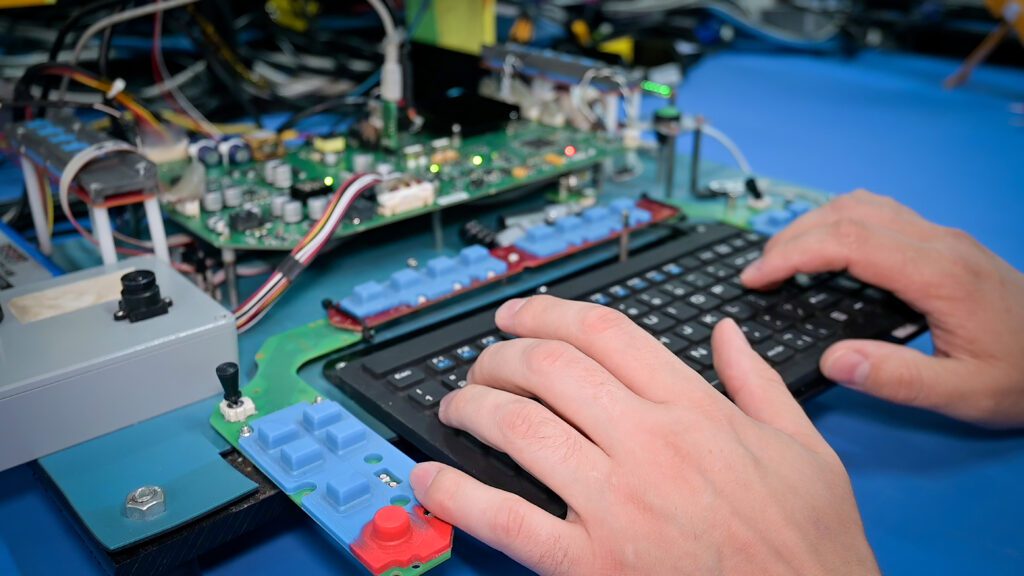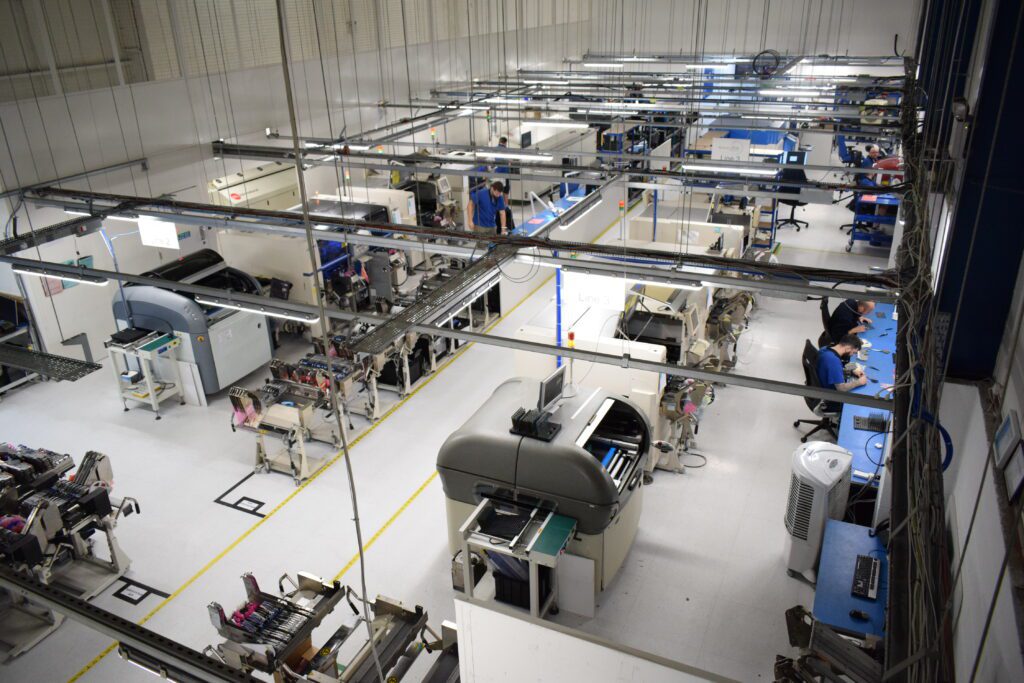As we move further into 2025, the printed circuit board (PCB) manufacturing industry is undergoing significant transformation. This is primarily driven by technological advancements, market demands, and sustainability concerns. Innovations in materials, automation, and design processes are reshaping the way PCBs are produced, leading to greater efficiency, higher performance, and more environmentally friendly solutions.
Let’s take a look at where things are headed in PCB manufacturing this year.
1. Advancements in AI and Automation
Artificial intelligence (AI) and machine learning (ML) are playing a crucial role in modern PCB manufacturing. In 2025, AI-driven automation is enhancing design, assembly, and quality control processes. Key improvements include:
- AI-Powered Design Optimisation: Automated PCB design software utilises AI to suggest optimal layouts, reducing design flaws and improving performance.
- Assembly & Inspection: AI-powered robotics streamline the manufacturing process by ensuring precise component placement and rapid defect detection through Automated Optical Inspection.
- Predictive Maintenance: Machine learning algorithms analyse manufacturing equipment performance, predicting failures before they happen to reduce downtime.

2. Rise of Advanced Materials
New materials are driving innovation in PCB manufacturing during 2025. The demand for high-performance and flexible PCBs has led to the adoption of:
- Flexible and Stretchable PCBs: Used in wearables, medical devices, and IoT applications, these PCBs enable new product designs and enhanced durability.
- Graphene and Nanomaterials: Improved conductivity and heat resistance make these materials ideal for next-generation electronics.
- Lead-Free and Eco-Friendly Substrates: Driven by regulatory and environmental concerns, manufacturers are moving towards biodegradable and non-toxic PCB materials.
3. The Growth of 3D PCB Printing
3D printing is revolutionising PCB production, allowing for rapid prototyping and customisation.
In 2025, key developments include:
- Additive Manufacturing for Complex Designs: Multi-layer PCBs can be printed with integrated components, reducing size and improving performance.
- On-Demand Production: Small-batch, cost-effective PCB manufacturing enables faster product iterations.
- Hybrid 3D-Printed Electronics: Combining traditional and additive manufacturing techniques for improved efficiency and functionality.
4. Sustainable and Green PCB Manufacturing Practices in 2025
With increasing global attention on sustainability, PCB manufacturing in 2025 has started to incorporate greener practices such as:
- Recycling and Waste Reduction: Recovering precious metals and reusing PCB components to minimise electronic waste.
- Energy-Efficient Manufacturing: Implementing renewable energy sources and optimising processes to reduce power consumption.
- Eco-Friendly Soldering Techniques: Using lead-free solder and alternative bonding methods to lower environmental impact.
5. AI-Driven Supply Chain and Smart Factories
The integration of Industry 4.0 technologies has led to the rise of smart factories that leverage AI, IoT, and big data analytics to enhance supply chain efficiency. Benefits include:
- Real-Time Inventory Tracking: AI-powered systems predict component shortages and optimise supply chain management.
- Connected Manufacturing Networks: Factories communicate seamlessly for faster response times and reduced production delays.
- Data-Driven Quality Control: AI analyses real-time manufacturing data to improve yield rates and minimise defects.

6. The Shift Towards High-Density Interconnect (HDI) PCBs
As electronic devices become smaller and more complex, the demand for High-Density Interconnect (HDI) PCBs continues to rise. In 2025, HDI trends include:
- Miniaturisation of Components: Increasing demand for compact and lightweight electronic devices.
- Improved Signal Integrity: Enhanced performance for high-speed applications like 5G and AI computing.
- Multi-Layer and Embedded Component Designs: Reducing space while maintaining high functionality.
7. Global Market Trends and Industry Outlook
The PCB industry is expected to see steady growth in 2025, driven by:
- 5G and IoT Expansion: Increased connectivity needs drive demand for high-performance PCBs.
- Automotive Electronics Boom: The rise of electric vehicles (EVs) and autonomous driving technology requires advanced PCB solutions.
- Medical and Aerospace Innovations: High-reliability PCBs for critical applications in healthcare and defense sectors.
The future of PCB manufacturing in 2025 is marked by cutting-edge advancements in AI, materials, sustainability, and automation. As the industry continues to evolve, companies that embrace these innovations will gain a competitive edge by delivering more efficient, cost-effective, and environmentally friendly PCB solutions.


